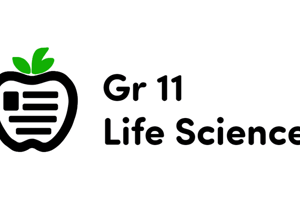Podcast
Questions and Answers
The brackets are indicating a(n) _____ bond.
The brackets are indicating a(n) _____ bond.
polar
What name is given to the bond between water molecules?
What name is given to the bond between water molecules?
Hydrogen
Which answer correctly ranks the atoms in terms of decreasing electronegativity (the highest electronegativity first)?
Which answer correctly ranks the atoms in terms of decreasing electronegativity (the highest electronegativity first)?
O, N, C, H
Dr. Haxton says the O-O bond is polar and the C-C bond is nonpolar. A good student would say...
Dr. Haxton says the O-O bond is polar and the C-C bond is nonpolar. A good student would say...
Use your knowledge of electronegativity to pick out the most polar bond in the list below: O-C, N-H, O-N, C-H, O-H.
Use your knowledge of electronegativity to pick out the most polar bond in the list below: O-C, N-H, O-N, C-H, O-H.
If you want a molecule that is highly polar, look for one that contains:
If you want a molecule that is highly polar, look for one that contains:
Polar attractions are...
Polar attractions are...
Hydrogen bonds can form between which elements?
Hydrogen bonds can form between which elements?
Each water molecule is joined to _____ other water molecules by ____ bonds.
Each water molecule is joined to _____ other water molecules by ____ bonds.
The unequal sharing of electrons within a water molecule makes the water molecule _____.
The unequal sharing of electrons within a water molecule makes the water molecule _____.
The tendency of an atom to pull electrons toward itself is referred to as its _____.
The tendency of an atom to pull electrons toward itself is referred to as its _____.
In this molecule, what type of bond is found between the oxygen and hydrogens?
In this molecule, what type of bond is found between the oxygen and hydrogens?
Which of these bonds is weakest?
Which of these bonds is weakest?
Why isn't this insect drowning?
Why isn't this insect drowning?
Which of the following helps most to explain why water has a high specific heat?
Which of the following helps most to explain why water has a high specific heat?
Flashcards are hidden until you start studying
Study Notes
Chemical Bonds and Polarity
- Brackets indicate a bond type; context needed.
- Water molecules are held together by hydrogen bonds, essential for various biological processes.
- Electronegativity is ranked as: Oxygen (O), Nitrogen (N), Carbon (C), Hydrogen (H).
Covalent Bonds
- O-O and C-C bonds are nonpolar due to equal electronegativity in identical atoms.
- Among the listed bonds, O-H is the most polar due to a significant electronegativity difference.
- The N-H bond is identified as highly polar due to the difference in electronegativity compared to other pairs listed.
Polar Attractions
- Polar attractions occur between atoms with partial charges and are weaker than covalent bonds but crucial due to their abundance in cells.
- Hydrogen bonds can form with nitrogen (N) and other electronegative atoms like oxygen (O), highlighting their role in molecular interactions.
Water Properties
- Each water molecule is connected to four others through hydrogen bonds, creating a robust network.
- The water molecule is polar because electrons are more attracted to oxygen, resulting in a partial negative charge on oxygen and partial positive charges on hydrogens.
- Electronegativity describes an atom's ability to attract electrons.
Bond Strength
- Polar covalent bonds exist between oxygen and hydrogen in water molecules, characterizing water's unique properties.
- Hydrogen bonds are the weakest type of bond compared to covalent and ionic bonds due to their nature of involving partial charges.
Water's Unique Properties
- Surface tension allows insects to stay on water's surface, demonstrating water's cohesive properties.
- Water’s high specific heat is attributed to its ability to form four hydrogen bonds, which helps stabilize temperature changes in environments.
Studying That Suits You
Use AI to generate personalized quizzes and flashcards to suit your learning preferences.



